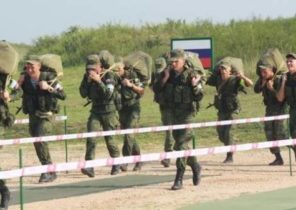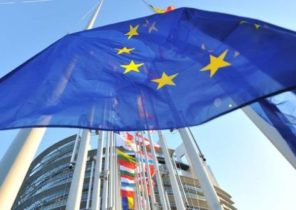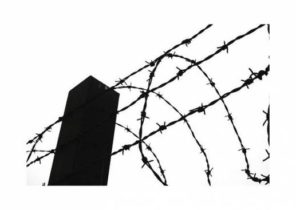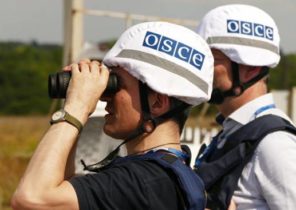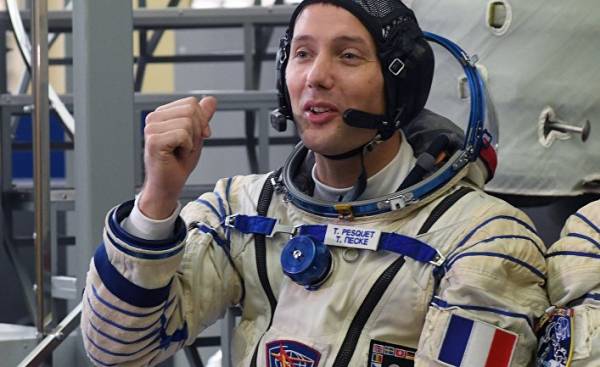
Before the flight to the ISS in November 2016 Tom Sand (Thomas Pesquet) thought about what made him return in the descent module of “Soyuz” will be one of the most anticipated moments of his mission. “It’s like the last round on the carousel” — fun he said. Together with Russian cosmonaut Oleg Novitsky, who was driving the capsule with a diameter of 2.2 m and height of 2.1 m, the French Explorer did the descent at breakneck speed in 28 thousand km/h! Landing occurred at the estimated time in the Kazakh steppe, some three hours after the ship pulled away from the ISS.
A few minutes after his landing, he exchanged a few words with Emmanuel Macron, who were in the National centre for space studies in Paris. Pesquet told the President that he was going to Cologne. The head of state appointed him a meeting on June 19 and noted that all the French are proud of them.
On Tuesday the young man gathered his suitcase of the size of two Shoe boxes. It was necessary, so nothing there to leave. From time to time the ISS is cluttered with different objects. It is not clear whether it would be possible to bring to earth the saxophone, which was delivered on a cargo ship on his birthday, 27 Feb. In addition to personal belongings, to the “Union” to send the data of scientific experiments (samples or hard drives). Dirty clothes will be destroyed in the garbage truck apparatus.
Mission Proxima tenth French astronaut came to an end after six and a half months spent in a confined space, the ISS, a habitable area of 400 m3 for the astronauts. This is comparable to the size of the apartment is 130 m2 with a three-meter ceiling, which is home to 4-5 people. Within 196 days (a record duration flight for the French astronaut). In summing up the total of their travel, a former airline pilot for Air France said that what he most lacked, of course, but family is the sense of freedom: “Go outside, ride a bike, go to the mountains to the sea, to feel the animals, feel the wind, the rain, different smells.” He never complained about the food (nothing special)for a “camping toilet”, which he had to repair on second day of stay on Board.
But mostly, Tom’s the Sand left only positive emotions. This unforgettable feeling of launch from Baikonur, and the daily meeting of the sixteen sunrises on the ISS, and life in zero gravity and go to space in a spacesuit in January and March for maintenance work, during which he held the station with one hand and saw how the Earth rotates 400 miles beneath his feet. 39-year-old astronaut felt great in this work, which aroused the admiration of their colleagues.
“Work on the ISS is a huge collective work,” said Tom. In total, the Frenchman from Normandy, participated in hundreds of scientific experiments, including sixty for the European space Agency (ESA) and the French CNES. Passengers to the ISS — real cowboys, subjected to numerous experiments to better understand the effects of weightlessness on the human body. But they also carry out fundamental physics experiments, including studying the behavior of fluids and materials in microgravity, in biology such as the cultivation of vegetables.
Tom talks about the experiment on a special simulator MARES (Muscle Atrophy Research and Exercise system rack), which allowed the expedition members to check the work of the seven joints and the muscles associated with these joints. (During a prolonged stay in conditions of minimal gravity, many muscles weaken — approx.ed.).
Most of the conducted experiments should help to prepare future foreign missions in the Solar system. Whether the creation of the lunar village, flying to an asteroid or to Mars. Pesquet “wants” to fly to the red planet. “But if it’s not me, it doesn’t matter. It is important that it was a European or even another French astronaut. “After his stay in space, astronauts are more keenly aware of the environmental fragility. “There are things that we can understand the mind but not the heart. We do not understand how fragile that in a moment you can hurt the planet and the need to protect her. Planet is a precious stone”. A young astronaut has spent most of his free time taking pictures of the Earth from different angles. He posted hundreds of great pictures and videos depicting landscapes, Northern lights, famous places and lighting of cities in social media throughout their journey. “That was my dream — to be so high, and it would be selfish not to tell others, as it was cool.” In his free time experiments pesquet communicated with the audience, particularly on Twitter, talked a lot with students.
And the last one. “I made a small detour in my normal life to be in space. It was just great. I’m a little sad to leave this Wednesday, as I don’t know if I can one day go back there. And at the same time, I’m happy because six months is a long time. And I look forward to meeting with the family and want to experience life on Earth!”

